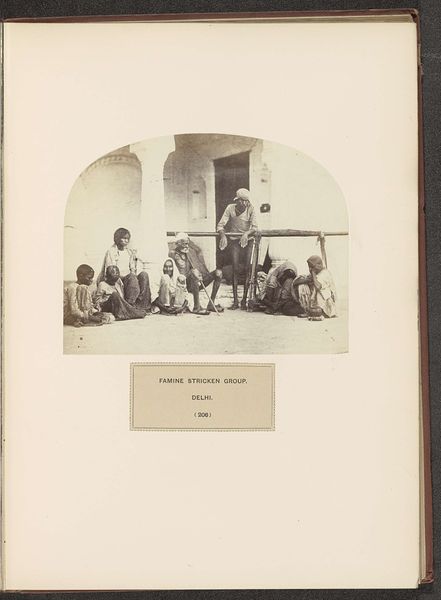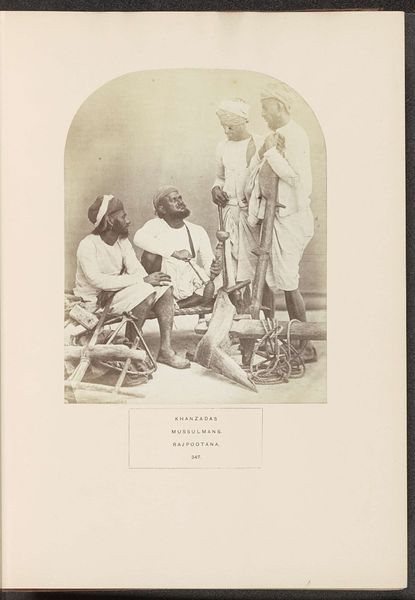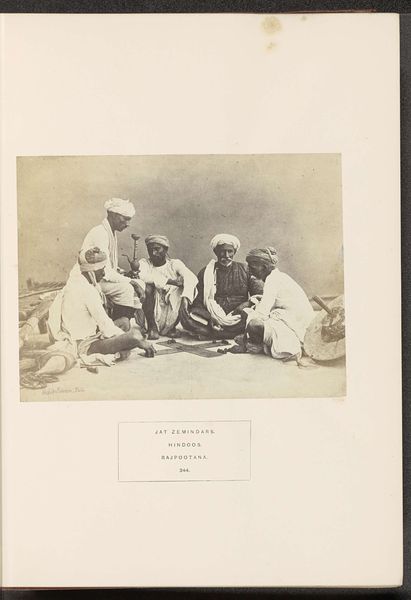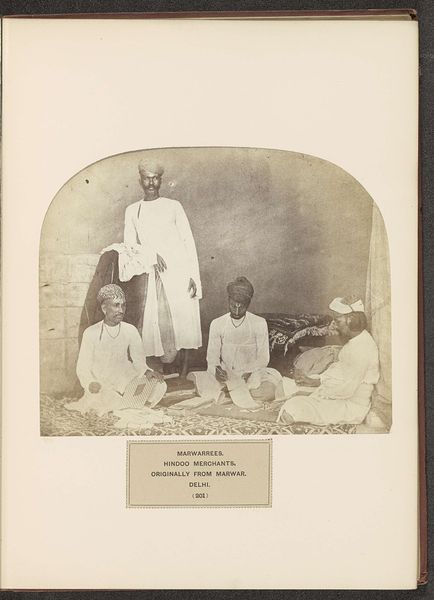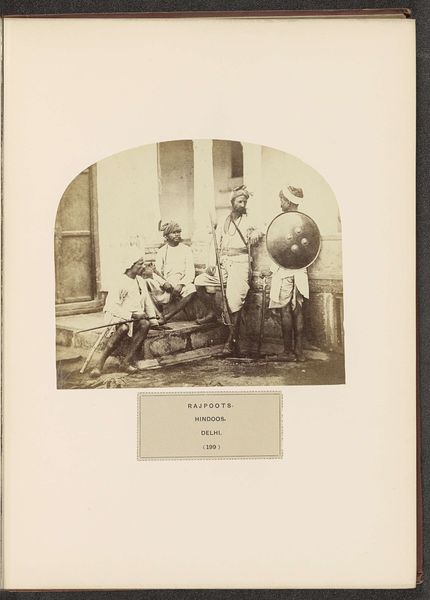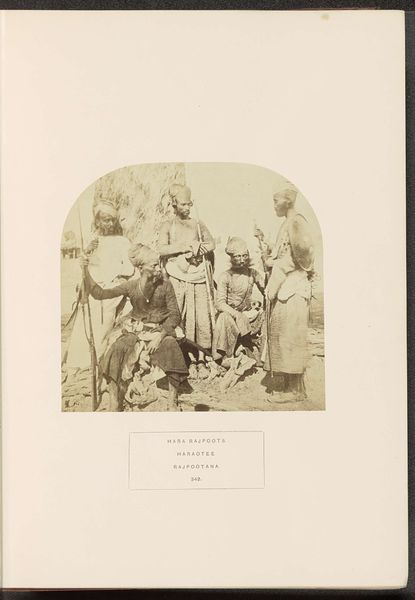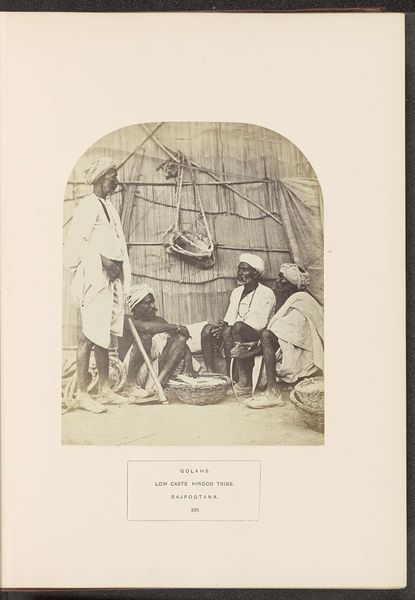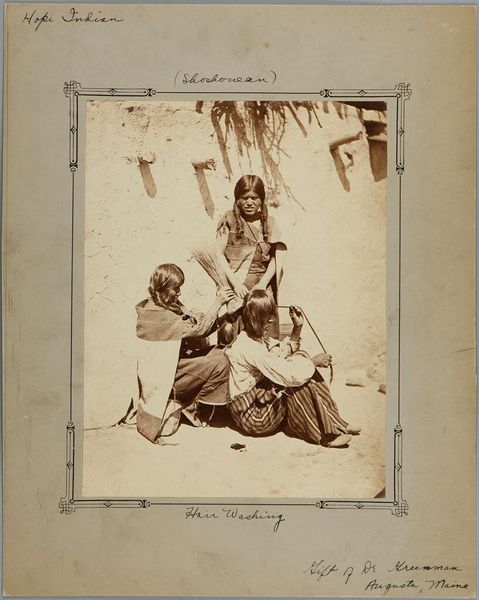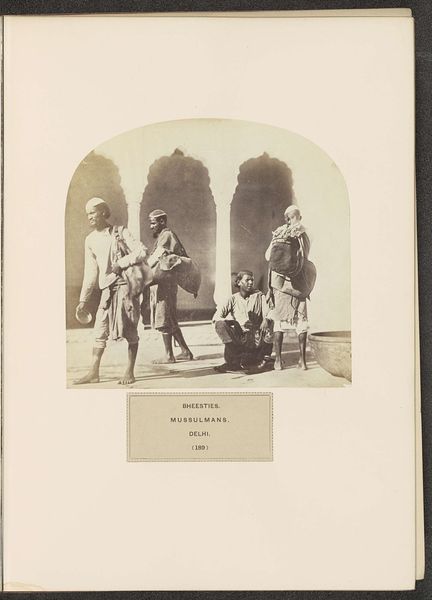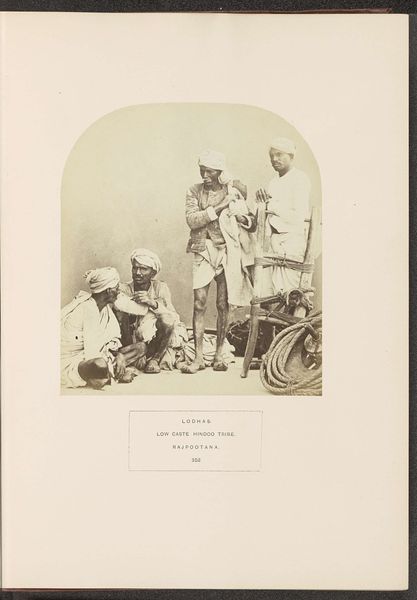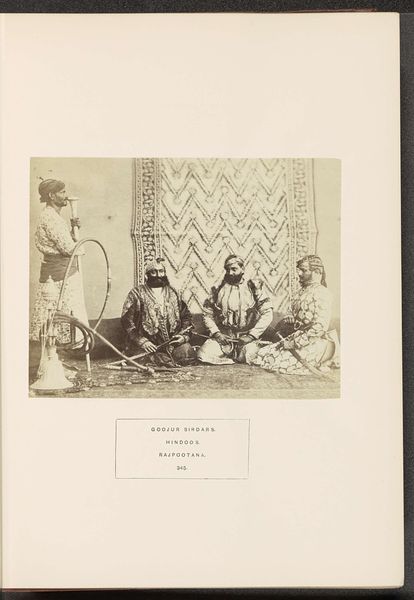
albumen-print, photography, albumen-print
#
albumen-print
#
photography
#
orientalism
#
albumen-print
Dimensions: height 155 mm, width 205 mm
Copyright: Rijks Museum: Open Domain
Editor: This albumen print, created by Shepherd & Robertson before 1869, titled “Jongleurs en acrobaten op straat in Delhi”, depicts a street performance in what I believe to be India, a genre painting captured through photography. The details are so interesting; it has an almost voyeuristic feeling to it. What can you tell me about the cultural context of this piece? Curator: That voyeuristic feeling you describe is central to understanding this image within the framework of Orientalism. The late 19th century saw a surge in Western interest in, and often a distorted representation of, the "Orient." Images like this weren’t simply documenting reality; they were actively constructing it for a Western audience. Do you notice the text that labels this photograph, categorizing these individuals and even associating them with low caste Hindus? Editor: I do see it now that you mention it; it almost reduces these individuals into spectacle by using that descriptor and classifying them within those parameters. Curator: Precisely. This is part of a broader historical trend where photography, alongside other art forms, was used to reinforce existing power structures. By othering these individuals, it justifies colonial intervention and control, reducing them to the exotic "other" for the consumption of a Western gaze. Now how does the knowledge of these existing power dynamics shape how we interact with art and museum exhibitions in today’s world? Editor: It sounds like context is necessary to provide an honest representation of the colonial agenda from the Western art world that doesn’t further contribute to the degradation or oppression of its subjects. Curator: Absolutely! We can learn to critically question the narratives presented to us and to seek out a multiplicity of perspectives on the works that we enjoy!
Comments
No comments
Be the first to comment and join the conversation on the ultimate creative platform.
